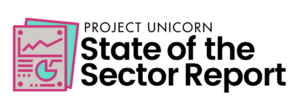Getting the Plumbing Ready for the Flood of Data
 A third of the people here at the iNACOL conference (#VSS11) are new to online learning and excited about the potential but struggling to understand the options. The third of attendees that have been at this for a while wonder what took so long. Online and blended learning is now front and center of the U.S. education agenda.
A third of the people here at the iNACOL conference (#VSS11) are new to online learning and excited about the potential but struggling to understand the options. The third of attendees that have been at this for a while wonder what took so long. Online and blended learning is now front and center of the U.S. education agenda.
We’re at an awkward stage where there are reliable but uninspiring first gen products and lots of wizbang products that don’t yet stitch together into a coherent offering. One reason is the lack of data infrastructure. With more digital devices and content arriving at schools, there a rising tide of data from which we are unprepared to derive full benefit.
I’m scrambling to understand a list of initiatives attempting to solve this problem:
- Common Education Data Standards, from NCES, a voluntary effort to coordinate output from state longitudinal data systems
- Learning Registry, a Department of Education project, to capture, share, and analyze learning resources
- Learning Resource Metadata Initiative (LRMI), a Creative Commons effort to create a common framework for tagging and organizing learning resources
- EdFi, a Dell Foundation funded universal data standard that permits interoperation among student data systems
- Shared Learning Collaborative (SLC), a Gates Foundation funded project building a common datastore with districts in five states.
Folks from the Gates Foundation conducted a couple sessions at #VSS11 this week. They described the sort of user experience and platform vision that we’ve been writing about for a couple years: engaging and adaptive content, comprehensive learner profiles, smart recommendation engine, social learning communities, and aligned services and tools.—in other words, personalized learning around a learning map with a good GPS.
They pointed to key problems being address: edtech components don’t work well together, ad hoc approaches lack access to data, and stuff costs too much. The next gen platform being developed for state partners includes an API (application programming interface), secure multi-tenant data story, LRMI metadata schema as well as learning map, dashboard, recommendation engine, and lots of third party apps.
However, it’s not clear that state representatives getting ready to issue Instructional Improvement System RFPs with Race the Top funding embrace the same vision. When we can compare a Shared Learning Collaborative website with an IIS RFP from RttT states like North Carolina we’ll all have a better sense of how this is actually going to play out. (Here’s an SIIA presentation on SLC.) The phase one states include CO, IL, MA, NY, and NC. Pilot projects will begin in these states in 2013. Phase two states will include DE, GA, KY, LA. SLC hopes that states will develop implementation roadmap after pilot.
If you’re a regular reader, you know I’m excited about the potential of Big Data but concerned about sector capacity to benefit from the tsunami of keystroke data headed our way. It’s good to know the SLC team has Big Data experience (e.g., watch this metaweb video).
One thing that is becoming clear is that Common Core State Standards, adopted by 44 states, are different and higher than most state standards. An iNACOL director said, “Most states are in for a rude awakening” as they come to grips with the new reading and writing expectations. A technologist said that after digging into the Core, “The standards blew my mind” and “ripples will be felt for years to come.”
Personal digital learning will helping more students achieve higher standards. The shift will require prepared teachers, effective communications, smart tools–and really good plumbing. The initiatives mentioned above are helping to create the data infrastructure for smarter education options. But for adult learners like you and me it often feels like drinking from a fire hose.






Tom Vander Ark
Here's an email comment:
Ed-Fi shares a close relationship with CEDS from both efforts’ beginnings. Ed-Fi used CEDS v1 as a starting place and is compliant with those original elements and definitions. In addition, members of the Ed-Fi team serve on current working groups (technical and stakeholder) to help develop CEDS v2 and have (to date) contributed more than 90 Ed-Fi elements to the CEDS v2 effort (currently scheduled for final release sometime in early 2012).
More technically speaking, Ed-Fi enables full implementation of CEDS K-12 data elements. Ed-Fi provides a unifying data model (core schema), a data exchange framework (interchange schemas), an application framework (extension schemas) and example metrics and sample dashboards. CEDS provides a data dictionary, and may provide a data model in future releases, but does not provide the additional technical components for implementation.
Annabelle Howard
I am the co-creator of what you might call a "wizbang product" that isn't all there yet -- a lean start-up. I was trained as a teacher in England and have created a motivational learning community of 17,000 students in Connecticut that raises test scores happily and cheaply ($6 per child for 12 months).
The obsession with data that you so accurately describe is disturbing and misguided. Teachers do not want or need a flood of data. They want a little data that means something immediately--plain English data, if you like.
My "wizbang product" is a system that teaches academic and domain-specific vocabulary in line with the CCSS. The need and concept have been praised highly. However, it just got rejected from a prestigious edtech incubator because the data wasn't complicated enough!!!!!
Giving kids a hard goal of learning 400 words a year is pedagogically sound (see BRINGING WORDS TO LIFE -- cited in Appendix A of ELA CCSS). Having a comprehensible goal like -- learn 400 words because that's what it takes to successfully transfer to college/workplace -- is easily understood and gamelike. It creates a surge of optimism because a kid might be able to beat that goal (learn more than 400). Our data tells how many words a kid has mastered and which complex texts s/he chose to read. That's enough information.
Do you know of an investor who listens to educators and allows tech to enable rather than dominate and flood? If so, please be in touch. My product, my400words, is waiting and kids need it now :)
Replies
Tom Vander Ark
Hi Annabelle
Right now teacher collect a lot of information, most of it informally. Most of the crude tools states and district use to assess knowledge and skill today aren't very useful to teachers. I'm excited about assessment that moves into the background and provide immediately useful information to students and teachers.
For example, I'd like to see student write at least 400 words every day (not every week or month). At least weekly, the writing should be scored by an automated essay scoring (AES) engine with feedback deposited in a standards-based gradebook. If students write more and get more feedback on mechanics, teachers can focus on critical thinking, logical argument, and the creative process.